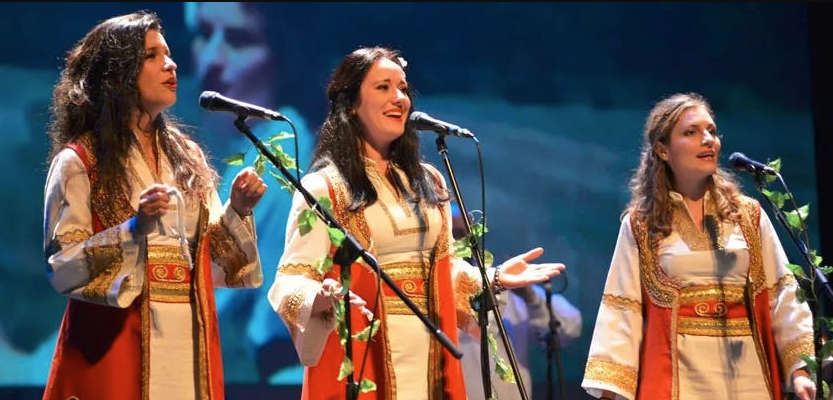“Who is that girl?”
We have an amazing ethno group called “Trag” based in the town of Laktaši, that’s only a few kilometres away from where we live.
I just found a video of a song they have arranged, and I wanted to share it with you, so as to give you a flavour of the rich traditional musical culture that surrounds me.
This song, “Čio e ono Devojče?” is originally from Eastern Serbia.
Who are “Trag”?
Ethno Group Trag is a renowned vocal and instrumental ensemble from Bosnia and Herzegovina dedicated to preserving and promoting traditional Balkan music. They are known for their unique interpretations of folk songs, bringing a fresh perspective to centuries-old musical traditions while staying true to the cultural roots of the region.
Founded in 2003, Ethno Group Trag was established as part of the Cultural-Artistic Association “Slavko Madić” in Laktaši, near Banja Luka.
The group features ten members, including four female singers specialising in traditional vocal harmonies and six instrumentalists who use both traditional and modern instruments, such as tambura, accordion, violin, flute, and percussion.
The word “Trag” translates to “trail” or “trace,” symbolising their mission to trace and preserve the cultural heritage of the Balkans.
Trag’s Musical Style and Repertoire
Their repertoire includes authentic songs from:
• Republic of Srpska
• Bosnia and Herzegovina
• Serbia
• Montenegro
• North Macedonia
• Bulgaria
They blend traditional instruments with modern arrangements, creating a harmonious fusion that appeals to contemporary audiences while preserving the original essence of the songs.
The Unique Sound of Eastern Serbia
Eastern Serbia boasts a rich and vibrant musical tradition that captures the essence of the region’s cultural heritage. Its songs and melodies, deeply rooted in the daily lives, myths, and folklore of the people, offer a glimpse into a world where music is more than entertainment. It really is a way of life.
One iconic song that echoes beyond the borders of Eastern Serbia is “Jovano, Jovanke.” Known and loved across the entire Balkans, this traditional tune exemplifies the heartfelt themes of love, longing, and the rhythms of rural life that characterise the region’s music.
What makes the music of Eastern Serbia so unique?
Well to be honest it’s the fusion of traditional instruments, vocal techniques, and storytelling:
• Raw Vocals and Izvike:
Traditional singing often features izvike, a powerful and emotive vocal expression. Women, especially, would sing in groups, creating rich polyphonic harmonies without instrumental accompaniment.
• Instruments of Heritage:
Bagpipes (gajde), wooden flutes (frula), and the shepherd’s kaval, provide a hauntingly beautiful backdrop to many songs, adding to their ethereal quality.
• Themes of Everyday Life:
Whether celebrating love, recounting stories of mythical heroes, or reflecting on the struggles of rural life, the songs carry a deep connection to the people’s history and soul.
A Living Tradition
Even today, these traditional songs are performed at cultural festivals, village gatherings, and special events, keeping the spirit of Eastern Serbia alive. Listening to them is not just about enjoying music, it’s about connecting to a timeless way of life that continues to inspire.
So, whether you’re drawn to the haunting melodies of the bagpipes or the intricate harmonies of folk singing, the music of Eastern Serbia invites you to explore its unique charm.
‘Tis the end of another year.
I’ll be back posting here in January, after Serbian Orthodox Christmas. 2024 wasn’t the best year I ever experienced, but as my neighbours say here “Šta je tu je” (it is what it is).
I’ll leave you with some “ethno fusion” of Serbian traditional and classic rock (in a way). Listen for those haunting bagpipes and the wonderful vocals from the girls voices. ⬇️
Thank You for Being Here
If you’ve read this far, thank you. Your support means the world to me, whether it’s a comment, a subscription, or just taking the time to share this post.
If you’re interested in supporting me but not through a paid Substack Subscription, my Buy Me a Coffee page is always open.
And, I’d be thrilled if you’d check out my new YouTube channel. It’s not about chasing numbers anymore; it’s about connecting with people who get it, who understand the joys and challenges of this phase of life.
Videmo se opet (I’ll see you again soon).



